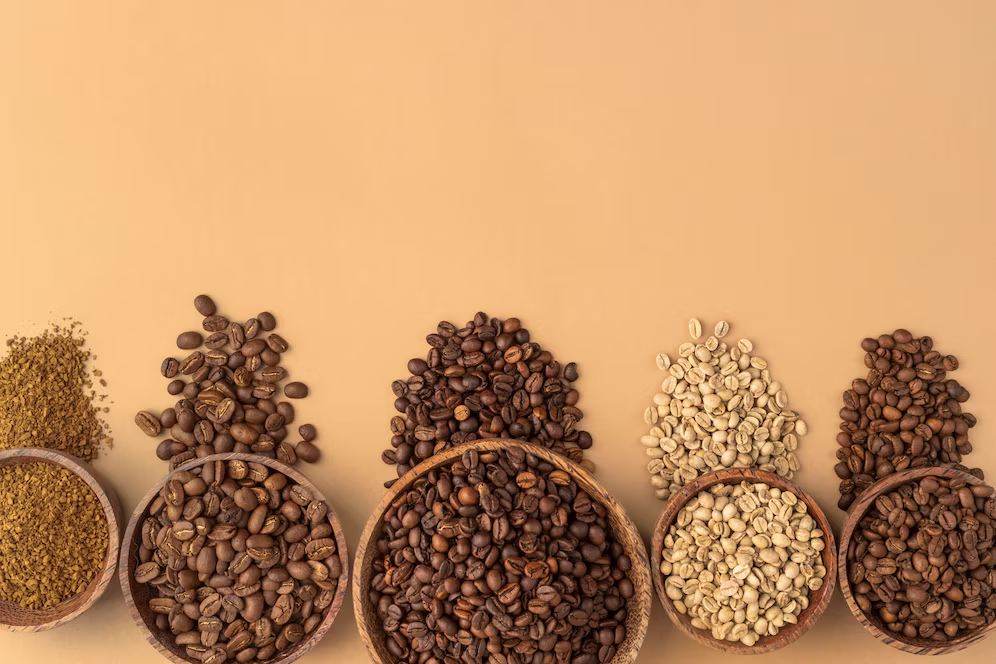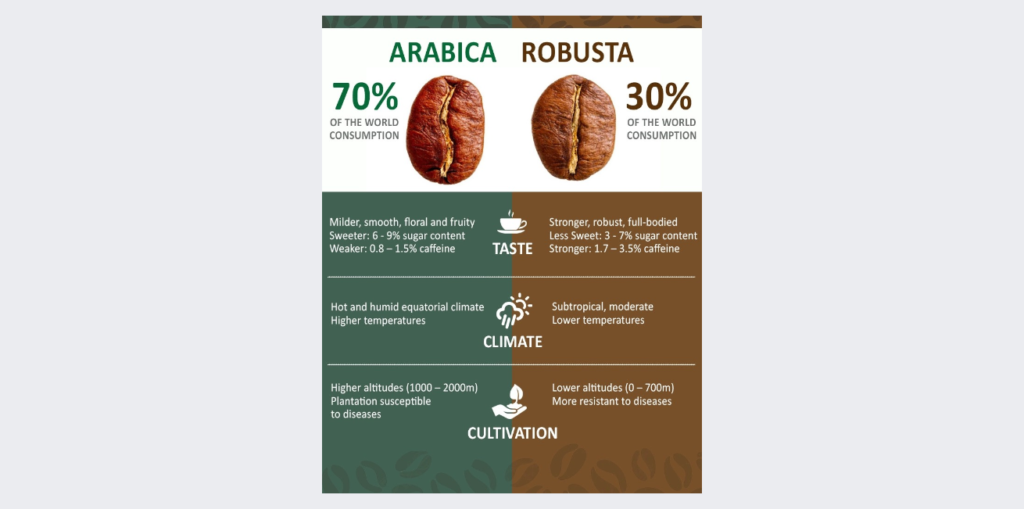Your cart is currently empty!


What is in a Coffee Bean?
Introduction
Coffee is more than just a beverage; it’s a global phenomenon that fuels mornings, stimulates creativity, and brings people together. But have you ever wondered what’s inside that tiny, unassuming coffee bean that gives it such powerful qualities? Understanding what is in a coffee bean can deepen your appreciation for this beloved drink and help you make more informed choices about the coffee you consume.
The Anatomy of a Coffee Bean
A coffee bean is not just a simple seed; it’s a complex structure with multiple layers and components, each contributing to the final flavor and aroma of your cup of coffee.
Structure of a Coffee Bean

- The Silver Skin: This is the outermost layer of the bean, a thin, silvery layer that often comes off during the roasting process.
- The Parchment: Beneath the silver skin lies the parchment, a protective layer that shields the bean during its development.
- The Bean: The most crucial part, the bean itself, is technically a seed. Most coffee cherries contain two seeds, which we commonly refer to as beans.
- Chemical Compounds: Inside the bean, you’ll find an array of chemical compounds, including chlorogenic acids, caffeine, lipids, and proteins. These compounds interact during roasting and brewing to create the unique flavors and aromas we associate with coffee.
Types of Coffee Beans
Arabica and Robusta are the two most often used varieties of coffee beans:
- Arabica Beans: Known for their smooth, complex flavors with higher acidity. Arabica beans make up about 60-70% of global coffee production and are often used in gourmet and specialty coffees.
- Robusta Beans: These beans have a stronger, more bitter flavor and are higher in caffeine. Robusta is often used in espresso blends to provide a bolder taste.

Growth Conditions
The flavor and quality of coffee beans are significantly influenced by the conditions in which they are grown:
- Altitude: Higher altitudes generally produce beans with better acidity and more complex flavors.
- Soil: Rich, well-drained soils contribute to the quality of the beans. Volcanic soils, in particular, are known to produce exceptional coffee.
- Climate: Coffee plants thrive in tropical climates with consistent rainfall and temperatures.
Chemical Composition of a Coffee Bean
A coffee bean is a miniature powerhouse of chemicals, each playing a role in the final brew.
Main Components
- Carbohydrates: Polysaccharides form the backbone of the bean’s structure, contributing to the coffee’s body and mouthfeel.
- Proteins and Amino Acids: These contribute to the Maillard reaction during roasting, which develops the bean’s complex flavors.
- Lipids: Fats and oils in the bean influence the texture and richness of the coffee, contributing to the creaminess, especially in espresso.
- Caffeine: This well-known stimulant is responsible for coffee’s energizing effects and also contributes to its bitterness.
- Chlorogenic Acids: These antioxidants provide health benefits but also contribute to the bitterness of the coffee.
- Trigonelline: This compound breaks down during roasting to form niacin (Vitamin B3) and contributes to the aroma of the coffee.
- Minerals: Coffee beans are rich in minerals like potassium and magnesium, which are essential for overall health.
Impact of Roasting on Composition
Roasting is a transformative process that alters the chemical composition of coffee beans:
- Maillard Reaction: This chemical reaction between amino acids and reducing sugars gives coffee its brown color and complex flavors.
- Caramelization: The natural sugars in the beans caramelize, adding sweetness and depth to the flavor profile.
- Degradation of Chlorogenic Acids: While roasting reduces these acids, it also develops new compounds that enhance the coffee’s flavor.
For a deeper understanding of the roasting process and its effects, check out The Ultimate Guide to Modern Coffee Powder.
The Journey from Bean to Brew
Understanding the journey of a coffee bean from its origin to your cup can help you appreciate the intricate processes involved.
Harvesting and Processing
The journey begins with the harvesting of coffee cherries. The cherries are then processed to remove the pulp, leaving behind the green beans. Processing methods, such as wet and dry processing, influence the flavor profile of the beans.
To learn more about this process, explore the Coffee Bean Corral’s guide.
Roasting
Roasting is where the magic happens. The beans are exposed to high temperatures, causing the chemical reactions that develop the flavors and aromas. The level of roast—light, medium, or dark—determines the final taste.
- Light Roasts: Retain more of the bean’s original flavors, with higher acidity.
- Medium Roasts: Provide a richer flavor by balancing acidity and body.
- Dark Roasts: Develop deeper, smokier flavors with reduced acidity.
Discover how roasting impacts flavor in our detailed article on Malnad Coffee: The Secret Behind Unique Flavor.
Grinding and Brewing
The grind size of your coffee beans should match your brewing method. Finer grinds are suited for espresso, while coarser grinds work well for methods like French press. The brewing process extracts the flavors from the coffee, with factors like water temperature and brewing time playing crucial roles.
For a guide on brewing methods, visit The Ultimate Guide to Single Origin Coffee.

The Health Benefits and Risks
Coffee is not only delicious but also offers several health benefits, though it’s essential to consume it in moderation.
Positive Effects
- Antioxidant Properties: Coffee is a significant source of antioxidants, which help combat free radicals in the body.
- Cognitive Benefits: Caffeine is known to improve focus, alertness, and cognitive performance.
Potential Risks
- Overconsumption of Caffeine: Too much caffeine can lead to anxiety, insomnia, and digestive issues.
- Impact on Sleep: Drinking coffee late in the day can interfere with sleep patterns.
For more insights into coffee’s health benefits and risks, check out The Ultimate Guide to Black Coffee: Benefits, Uses & Essential Facts.
Moderation and Balance
Balancing your coffee intake is key to enjoying its benefits without experiencing negative side effects. It’s recommended to consume no more than 400 mg of caffeine per day, which is about four 8-ounce cups of coffee.
Conclusion
Understanding what is in a coffee bean reveals the complex and fascinating world hidden within this small seed. A coffee bean contains various layers and chemical compounds, such as caffeine, chlorogenic acids, lipids, and proteins, all of which contribute to the rich flavors and aromas in your cup. From its intricate anatomy and chemical composition to the transformative processes it undergoes during roasting and brewing, each step plays a crucial role in delivering that perfect cup of coffee.
For those looking to explore unique coffee options, consider trying our Malnad coffee, known for its distinct flavor profile influenced by the rich soil and ideal climate of the Malnad region. Explore our collection of high-quality coffee products at Malenadu Taste and Travel.




Leave a Reply